What Is Substance Use Disorder?
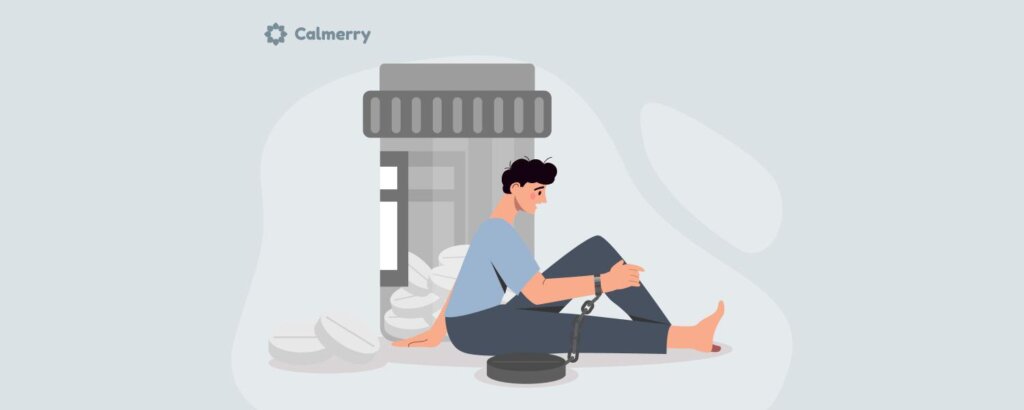
In this article
Substance use disorder develops when substance use becomes harmful, disrupting everyday life, health, and relationships. The condition involves any substance and signals lasting changes in brain activity, behavior, and motivation.
This article straightforwardly describes substance use disorder. It focuses on several kinds of SUD, such as alcohol, opioids, tobacco, and cannabis. It also explains SUD stages, ranging from experimentation to addiction. We will discuss how drugs affect the brain, why some individuals are more vulnerable, and what recovery and treatment may be.
Substance use disorder: meaning
Substance use disorder (SUD) is a condition where someone struggles to control their use of alcohol, drugs, or other substances, even when it’s clearly causing problems in their life. Over time, the brain adapts to repeated use, making quitting tough. Intense cravings and unpleasant withdrawal effects often happen when stopping.
For some, drug use remains occasional and manageable. For others, it becomes a struggle that leads to addiction. This much depends on personal background, emotional health, and life situation.
In the United States alone, about 17% of people aged 12 and older experienced a substance use disorder in the past year. Also, nearly 7.5M people, or 3/100, struggled with both alcohol and drug problems at the same time.
Types of SUD
The types of substance use disorder include the following:
- Alcohol
- Cocaine
- Cannabis
- Tobacco
- Methamphetamine
- Opioids
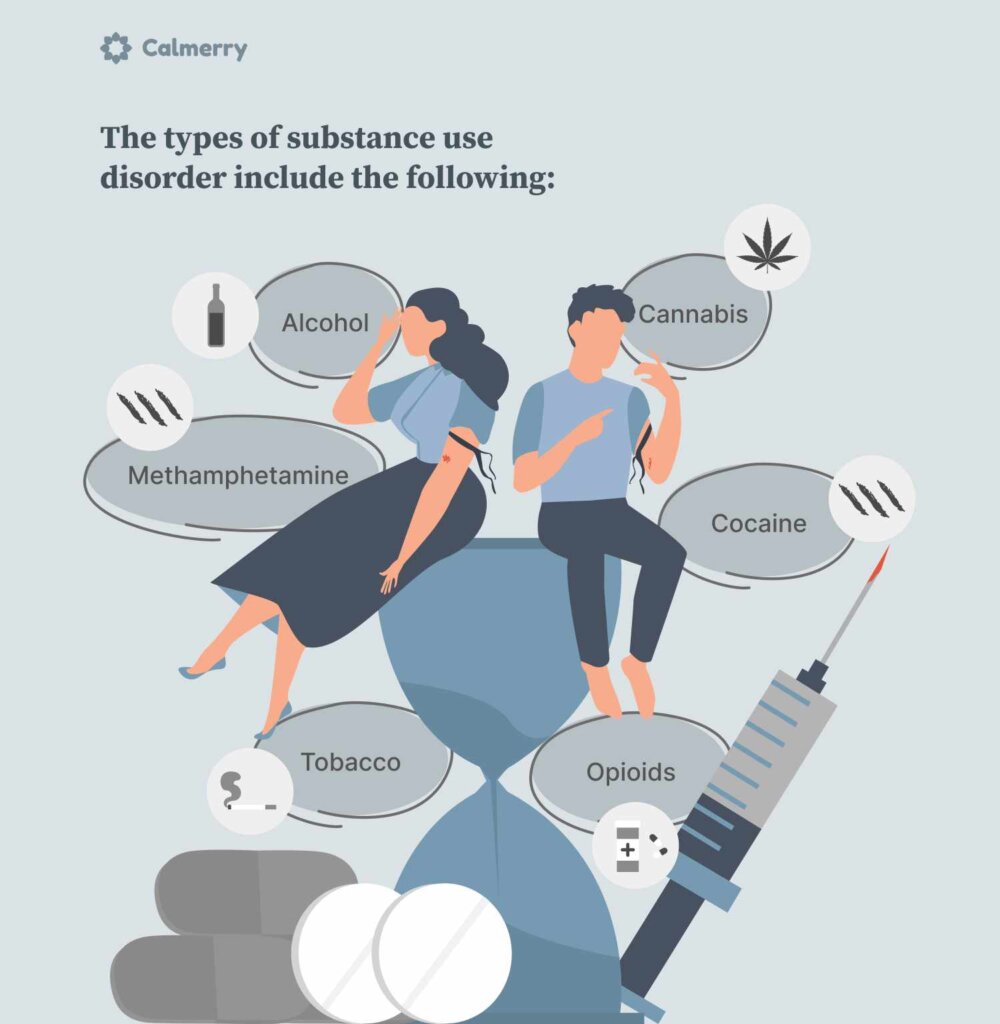
Alcohol use disorder
With alcohol use disorder, people find it difficult to control how much they drink. They may go over their limit regularly, try and fail to cut back and deal with strong urges to drink.
Drinking may also interfere with daily tasks and relationships. With continued use, their body needs more alcohol to function normally. Quitting can trigger difficult withdrawal symptoms, namely:
- Trembling
- Anxiety
- Nausea
Cocaine use disorder
Cocaine use disorder is about losing control. People may start feeling like they can’t function without it, and that leads to emotional ups and downs, trouble sleeping, and even social problems.
Cannabis use disorder
Though many use marijuana casually, it can turn into a habit that’s hard to break. Cannabis use disorder happens when it starts to take priority over daily life, often beginning with a strong mental attachment. Unlike other substances, it tends to develop gradually and is frequently underestimated due to the drug’s social acceptance and milder acute effects.
Tobacco use disorder
Tobacco use disorder occurs when someone can’t resist the urge to smoke or use nicotine, often because of habits or moods, not because they want to feel intoxicated. Its grip is reinforced by its legal status, daily rituals, and rapid nicotine delivery rather than intense behavioral disruption.
Methamphetamine use disorder
Methamphetamine use disorder is a compulsive meth use pattern. People with meth use disorder become severely psychologically dependent on the drug. They experience cycles of crashing and bingeing. The disorder ultimately lowers judgment and increases aggression. It also leads to drastic cognitive and emotional decline. Withdrawal is hard, and recovery always takes months.
Opioid use disorder
Opioid use disorder is an obsessive pattern of use of opioids, both prescription pain drugs and illegal opioids. People keep using them even when it causes problems. The disorder alters how they feel pain, handle emotions, and make choices.
The tolerance grows over time, and the craving intensifies. Withdrawal signs can make it hard to leave it alone without help. This most often results in ongoing use and increased dependence.
Most common type of SUD
Alcohol use disorder (AUD) is the most common substance use disorder in the US. It affects millions of adolescents and adults. People with AUD struggle to control their alcohol use despite the fact that it is harming their health, relationships, and obligations.
Opioid and stimulant use disorders are also common mental disorders. However, AUD is still the most common form of drug use disorder in the country.
What are the symptoms of substance use disorder?
Drug consumption is characterized by a set of symptoms that impact both body and mind. Classic symptoms include intense craving, loss of control in its consumption, and neglect of responsibilities. The majority persist despite negative effects.
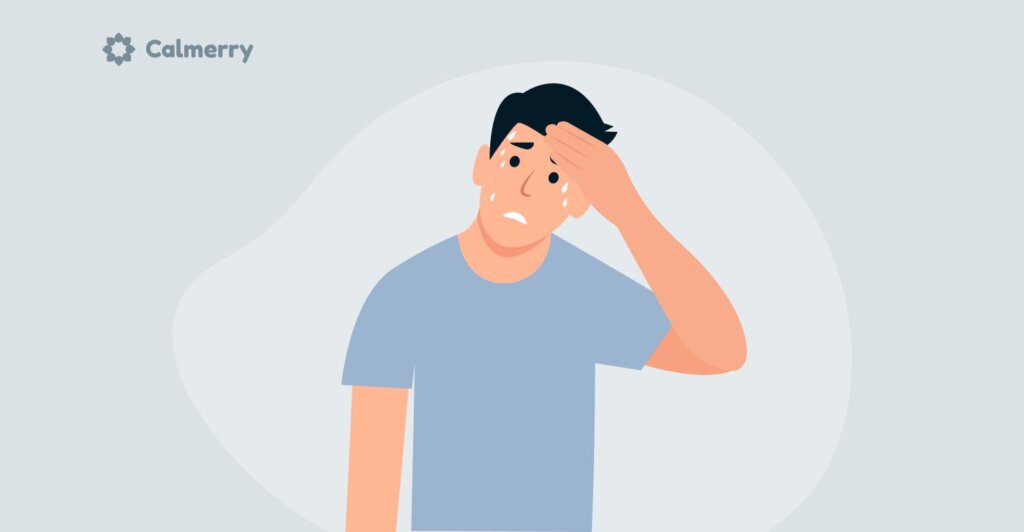
These physical changes and psychological alterations occur most often:
- Weight loss or gain
- Sleep disorder
- Poor hygiene
- Mood swings
- Anxiety
- Paranoia
Intoxication
Intoxication symptoms vary by substance. They often include:
- Slurred speech
- Poor coordination
- Altered judgment
Intoxication may also cause changes in alertness or mood. Physical signs can include bloodshot eyes. You might also notice unusual odors. Pupils may be dilated or constricted as well.
Withdrawal
Withdrawal happens when the drug use is cut down or stopped. Signs include:
- Sweating
- Insomnia
- Nausea
- Depression
- Anxiety
- Confusion
In severe cases, seizures or hallucinations can also occur.
Signs of a substance use disorder
Behavioral symptoms involve:
- Hiding things
- Mood changes
- Trouble at school or work
Physically, weight shifts, lack of coordination, or strange smells can occur.
Social withdrawal, new social circles, and legal problems are also common.
People use the substance or persist in drinking despite excessive consequences.
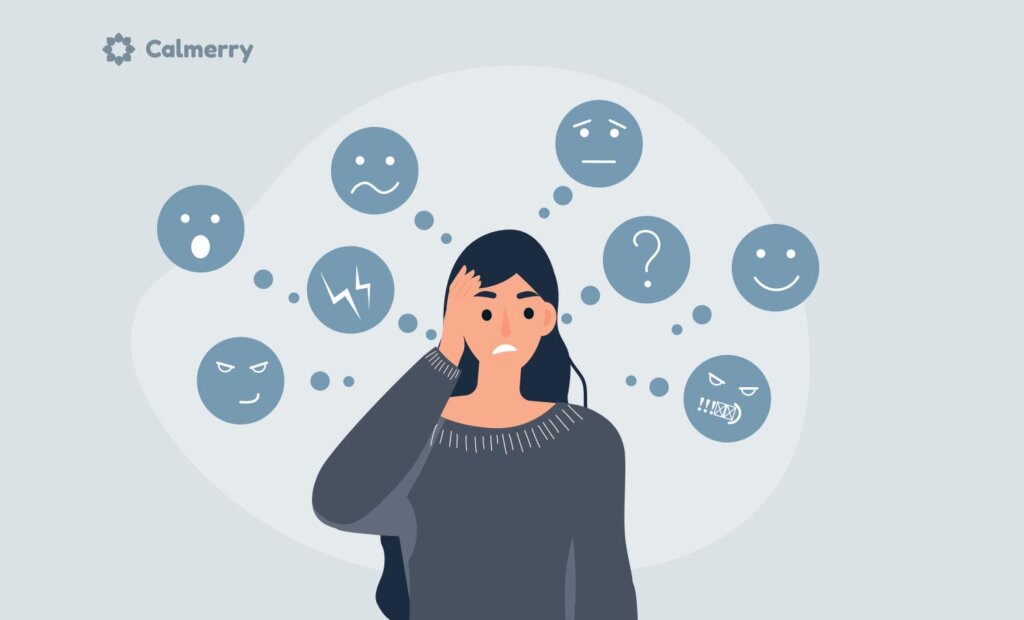
Genetic predisposition
Addiction is highly heritable, with 50%. There are genes that influence dopamine and serotonin regulation, potentially increasing addiction risk. However, addiction does not come from any gene.
Environmental influences
The primary influences are:
- Family processes
- Peer culture
- Exposure to trauma
- Disorganized home life
- Family history of substance use
- Unsupervised time
Social settings promoting and normalizing drug use are also a factor.
Mental health conditions
It’s common for drug use disorders to happen together with co-occurring mental conditions like depression and anxiety. People may use drugs to self-medicate, which can worsen symptoms and increase the likelihood of addiction.
Causes of substance use disorder
The reasons people use drugs include biological, psychological, and environmental factors. Genetics can make some more vulnerable, with family history responsible for about 50% of the risk. Mental health problems also often affect drug use.
Environmental factors are:
- Peer pressure
- Family dynamics
- Early drug exposure
These factors interact in unique ways for each person, shaping their risk.
Development of a substance use disorder
Drug use disorder typically develops over a period of time. What begins as recreational use – due to curiosity, peer pressure, or a feeling of relief – becomes a habit later on. At first, the drug provides temporary advantages like relaxation, concentration, or escape. But as use continues, the brain starts adjusting.
As the brain readjusts, it becomes less responsive to natural reward and more to the drug. Craving grows, and cessation becomes more difficult. Use may shift from option to compulsive need, even as negative consequences emerge in everyday life.
There are many reasons why a disorder develops. Some people take drugs as a means of coping with stress or emotional distress. Other people are led by their peers or have easy access to drugs. For many people, the passage from use to dependence occurs without clear warning signs.
As repeated use occurs, the behavior becomes more relief-seeking than voluntary. The longer the pattern continues, the more mood, judgment, and behavior are altered, leading to the development of SUD.
Common progression triggers include:
- Social pressure
- Curiosity of substance effects
- Performance enhancement
- Emotional escape
- Experimental use
- Occasional use
- Heavy use
Impact on the brain and body
With regular drug use, brain functions and body responses shift, causing the person to rely on the substance as natural control fades.
How substances affect brain chemistry and behavior
Drugs distort the brain’s communication system. They overstimulate reward circuits. This dulls self-control and reinforces behavior that favors use over well-being or consequences.
Long-term health consequences
Prolonged substance use may result in:
- Cognitive decline
- Liver or heart damage
- Emotional instability
- Weakened immunity
- Increased risk of chronic diseases and mental health problems
SUD: risk factors
Risk factors caused by the uncontrolled use of a substance connect across biological, psychological, and social areas. These factors are:
- Mental health issues
- Family history of drug use
- Tough childhood experiences
- Genetic traits
- Bad company
Each factor raises vulnerability by influencing behavior and how people cope with emotions.
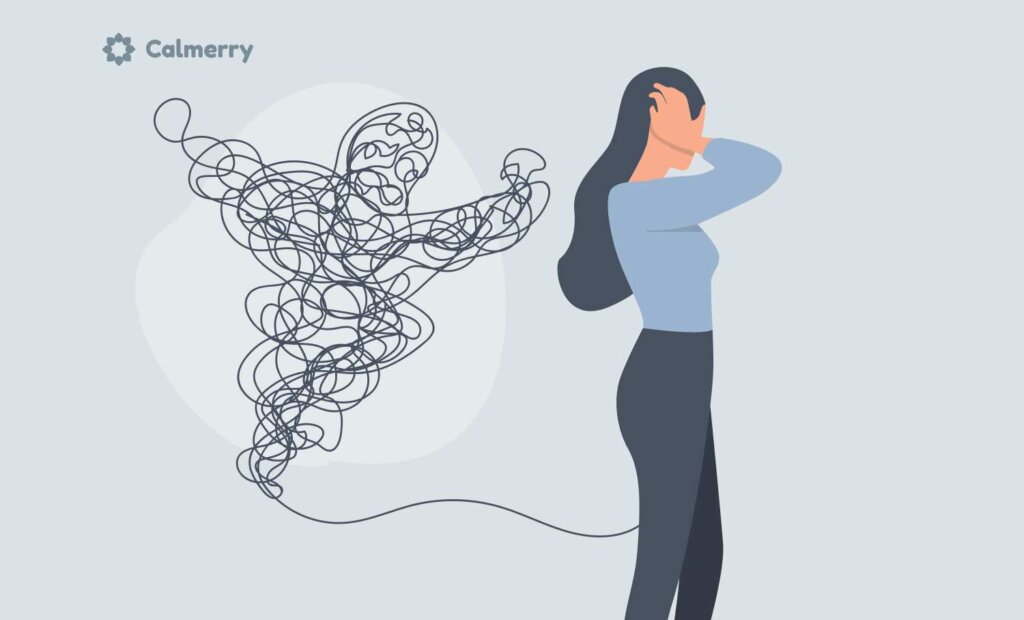
SUD: complications
Drug use disorder can lead to severe physical, emotional, and social complications that affect nearly every aspect of life, namely:
- Cancer
- Depression
- Infections like hepatitis B, hepatitis C & HIV
- Memory loss
- Academic or career challenges
- Interpersonal relationship difficulties
- Poor decision-making that leads to unsafe outcomes
- Greater risk of consuming unknown or laced substances
Diagnosing SUD
Drug dependence is diagnosed with a clinical evaluation. This evaluation examines behavior patterns, drug history, mental health, and how well a person functions. Healthcare pros use criteria to identify compulsive use, tolerance, withdrawal symptoms, and how these affect daily life. They then plan treatment based on the type of substance being used.
SUD: treatment
Addiction treatment isn’t the same for everyone. It usually blends medication and therapy in a way that fits each individual.
By targeting emotional triggers and behavior patterns, therapy helps change how someone responds to stress. Medications help the body adjust by reducing cravings and supporting mental health. This all gives a clearer guide to recovery.
Approaches may vary, but the goal stays the same: lasting progress and fewer relapses.
Recovery and relapse
Recovery doesn’t take overnight. It takes time and covers mental and physical recovery that consists of the following:
- Therapy
- Medication
- Community support
Relapses may happen, but they don’t erase progress. They are not a failure, but a part of recovery. Relapses simply note areas that need further attention. They bring awareness to what’s not working, offering a clearer direction ahead.
SUD therapy
Successful addiction treatment uses proven strategies designed for each individual, focusing on both what they do and how they feel. Therapy options include:
- Assertive community treatment. This approach focuses on individuals with severe addiction, giving them strong, team-driven support in their daily lives.
- Cognitive behavioral therapy helps individuals identify non-productive thoughts and behaviors linked to drug dependence and replace them with healthier patterns.
- Contingency management. This method supports reducing substance use by rewarding healthy behaviors with tangible incentives.
- Dialectical behavior therapy. DBT works by teaching skills to handle emotions and resist impulsive urges.
- Family therapy improves communication and resolves conflict patterns that contribute to the misuse of intoxicants within family systems.
- Motivational enhancement therapy. This therapy helps strengthen motivation from within to reduce or stop substance use by clearing up doubts.
- Therapeutic communities. TCs provide a supportive, residential environment where people work on lifestyle changes and develop responsibility through peer support over time.
SUD medications
Medications aimed at drug addiction treatment work by easing withdrawal, cutting cravings, or blocking the substance’s effects, and require a prescription from specialized mental health services.
SUD: prevention
Preventing drug use disorder involves strengthening protective factors, such as:
- Mental health support
- Healthy coping strategies
- Lowered contact with harmful substances
Getting help early and maintaining regular care also cuts down risks.
Outlook for SUDs
The key factors in SUD treatment are:
- Prompt intervention
- Ongoing assistance
- Access to effective therapies
Sustained recovery requires continuous support within mental health care.
Conclusion
Substance use disorder impacts millions by changing brain chemistry, mood, and decisions. The development from initial use to addiction may vary, but generally follows a distinct route.
Genetics, mental health, and social conditions all matter in recovery. This process takes time. However, with the right therapy, medications, and support, individuals can find their true selves and become clean again.
Relapse can happen, but it often helps inform the path forward — one that begins with understanding substance use disorder.
Frequently Asked Qusetions
What exactly is SUD?
Drug use disorder is a psychiatric condition where substance use continues despite clear harmful effects, due to changes in the brain and behavior that impair control.
How is substance use disorder diagnosed?
Diagnosis includes evaluating behavior patterns, physical or psychological and mental health disorder symptoms from drug use, and how much the person’s life, relationships, or duties are affected. Doctors typically rely on screening tests and interviews to assess severity.
What are the main signs that someone might have a substance use disorder?
Common indicators are:
- Changes in personality
- Limited social interactions
- Inability to control usage
People with SUD often experience intense urges, invest significant time in acquiring or using substances, and continue using despite efforts to stop drug use.
Is substance use disorder the same as addiction?
Yes, substance use disorder is the clinical term for what’s commonly called addiction. Both describe a condition where the person continues using drugs or alcohol even when it harms their well-being.
Can substance use disorder be treated?
Yes, there are treatment programs that combine medication and certain types of therapy to help people stop addiction caused by the substance. A treatment plan may include:
- A type of talk therapy
- Medication
- Support focused on assisting people to regain stability
Is relapse a sign that treatment has failed?
No, relapse is not a failure. It is a part of the recovery process. Like other chronic conditions, substance use disorder often requires ongoing care and adjustments in treatment plans.
What causes someone to develop a substance use disorder?
A combination of genetic, psychological, and environmental factors can lead to this disorder. It may stem from the following:
- Early exposure
- Emotional trauma
- Use of substances to cope with stress or mental health symptoms
How can Calmerry help?
Calmerry offers access to licensed mental health professionals who create treatment plans tailored to individual needs. Through types of treatment such as talk therapy, clients get support that focuses on helping with both the emotional and behavioral aspects of substance use.
Biology of Addiction. (2024, June 17). NIH News in Health. https://newsinhealth.nih.gov/2015/10/biology-addiction
Price, M. (n.d.). Genes matter in addiction. https://www.apa.org. https://www.apa.org/monitor/2008/06/genes-addict
Hasin, D. S., O’Brien, C. P., Auriacombe, M., Borges, G., Bucholz, K., Budney, A., Compton, W. M., Crowley, T., Ling, W., Petry, N. M., Schuckit, M., & Grant, B. F. (2013). DSM-5 Criteria for Substance Use Disorders: Recommendations and Rationale. The American Journal of Psychiatry, 170(8), 834–851. https://doi.org/10.1176/appi.ajp.2013.12060782
Earp, B. D., Wudarczyk, O. A., Foddy, B., & Savulescu, J. (2017). Addicted to Love: What is love addiction and when should it be treated? Philosophy, Psychiatry & Psychology, 24(1), 77–92. https://doi.org/10.1353/ppp.2017.0011
online therapy
live video session



